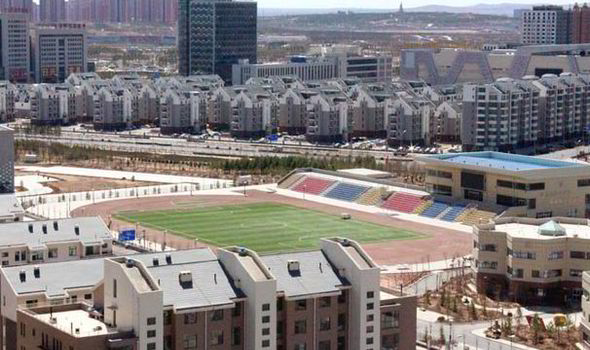Failure to up investment in protecting and restoring drylands – soils in particular – could put future food supplies at risk and hamper efforts to mitigate and adapt to climate change, says the International Union for Conservation of Nature (IUCN) ahead of the 13th session of the Conference of the Parties to the United Nations Convention to Combat Desertification (UNCCD COP13), which opens on Wednesday, September 6, 2017 in Ordos, China.

Drylands, which include habitats such as savannahs, mist forests and oases, cover 41% of all land on Earth. They are home to one third of the world’s population and store 36% of global terrestrial carbon. They also sustain 44% of the world’s cultivated systems and 50% of the world’s livestock. Most of dryland biodiversity is found in the soil, which determines the overall fertility and productivity of the land.
“Species and ecosystems below and above ground are the engines of life in drylands, whose importance in sustaining billions of lives around the world is often underestimated,” says Inger Andersen, the IUCN Director General. “Drylands secure food and water supplies for local people, mitigate climate change and reduce the impacts of disasters. Their soils, however, form slowly and are easily damaged. IUCN urges countries to invest in conserving these ecosystems for the vital services they provide, and for the crucial role they play in achieving the Sustainable Development Goals.”
Land degradation in drylands – known as desertification – could result in a 12% fall in global food production in the next 25 years. It could also contribute to global carbon dioxide emissions, with about 60% of carbon in soils lost through land degradation. It is estimated that between 25 and 35% of drylands are being degraded, which undermines their productivity. Over 250 million people are directly affected, and a further one billion in over one hundred countries are at risk.
IUCN calls for urgent investment in restoring and sustainably managing drylands as a high priority for achieving the Sustainable Development Goals, including to combat climate change, reduce poverty, increase food and water security, and boost health and economic growth.
“Sustainable land management practices can prevent the degradation, and improve the productivity and resilience of drylands,” says Jonathan Davies, Coordinator of IUCN’s Global Drylands Initiative. “These practices involve protecting biodiversity, including the bacteria, fungi and insects that live in the soil and which maintain nutrient and hydrological cycles. Biodiversity is also vital for pollination which is a major factor in overall agricultural production. Sustainable land management is a viable policy option for countries to address development and environmental challenges.”
Some traditional crop farming and livestock production practices developed by dryland communities involve minimising tillage and planting trees alongside crops to maintain soil organic matter and moisture. It is estimated that by sustainably managing soils, food production could increase by up to 58%. Improved livestock production and rangeland management could sequester up to 2,000 million metric tons of carbon dioxide by 2030, which is more than the 2015 CO2 emissions of Russia.
IUCN urges countries to sustainably manage land by strengthening the rights of local communities and by facilitating finance opportunities for small and medium agribusinesses that engage in sustainable land management. Countries are also encouraged to restore large-scale degraded dryland landscapes.
The UNCCD COP13 takes place from September 6 to 16 in Ordos, Inner Mongolia, China.
